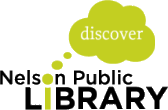Cloud Storage
Cloud storage refers to a service offered by a cloud provider (an internet system that provides on-demand/online computing services, including data storage). The provider stores the data in its own data centers (as opposed to your computer or thumb drive). The provider maintains the system infrastructure and services, such as managing the hosting environments, data security, etc. Cloud storage is considered a good data backup for storage in case of disaster recovery, although full security is generally a fee-based service.
Things to consider: price, security, platforms (ie. Android vs iPhones)
Examples of free storage for personal use:
- Dropbox – 2 GB (relatively low amount, good for document storage)
- Google Drive basic – 15 GB (also provides computing services)
See also: Portable Media such as USB drives
Computer Basics
- Setting Up a Desktop Computer (Youtube)
- DigitalLearn.org – Use a computer to do almost anything! Tutorials on topics such as: Starting Out on a Computer; Being Safe Online; Job Skills (including resumes); Being Productive (Word, Excel, Cloud Storage); Connecting with Others (Facebook and Skype); Mobile Devices.
- GCF LearnFree Computer Basics provides short and easy-to-follow tutorials to introduce you to computers and the Internet.
- Tech Boomers shares helpful technology tips and useful online resources for older adults and others new to the Internet.
- Chromebooks – a guide from Halifax Public Library
Digital Literacy
Learn how to effectively use devices, software, and the internet to collaborate with others and discover, use, and create information. Microsoft Digital Literacy offers resources, including SCORM packages, lesson guides, transcripts, videos, and closed caption files.
- Microsoft Digital Literacy – videos for download in 12 languages!
File Types
iPhones & iPads
- Gettings Started with the iPhone (Youtube)
- Getting Started with the iPad (Youtube)
- iPhone Basics is a free tutorial that outlines the basics of operating and getting the most out of the popular Apple iPhone.
- Tech Boomers shares helpful technology tips and useful online resources for older adults and others new to the Internet.
Mobile devices of all kinds
- Generations on Line (GoL) – Looking for ways to help an older relative or friend get connected but you can’t be there? These resources can help!
- Tablet Tutorials – easy tablet help for seniors by GoL, for Apple, Android, and Fire tablets
Mobile hotspots (or Wifi hotspots, portable hotspots)
A wireless access point that is shared for connecting your devices to the Internet. Cafes and other businesses often provide internet access and display a password to connect to this hotspot for free. Be aware that this is shared and there are security issues if accessing sensitive information.
Some hotspots are created from a device plugged into your computer (requires a data plan). Temporary hotspots can be created through a smartphone feature (this also uses your data and may cost extra fees).
Podcasts
Click on the links above to listen or to download to your device, check out this how to article on downloading to your phone or tablet.
Portable media (Flash drives, USB memory stick, thumb drives, etc)
An external flash storage drive for documents and files with limited storage capacity. Once plugged in to a computer’s USB port, can be viewed through the computer’s internal search file “explorer” (remember to eject this when removing).
- Sometimes USB flash drives need to be cleaned or reformatted to either get rid of a virus or change its formatting system.
- Formatting your USB drive to exFAT will allow you to work in both Windows and Mac environments, and is also better for files bigger than 4GB, because it has better disk space management than other formats.
Resources & Training – Local
- Book A Librarian – get help from the Nelson Public Library’s staff.
- CBAL (Columbia Basin Alliance for Literacy): Computer Guides – Lesson plans introduce you to: your computer and IPad; Gmail, Twitter, Skype & Facebook; Shopping Safely Online.
SD card
- Short for Secure Digital card, is a type of removable memory card used to read and write large quantities of data in a wide variety of mobile electronics, cameras, smart devices, and more.
Zoom
Zoom opens a virtual “room” where people gather and share. Participants can see each other, talk and send chat text messages. NPL uses Zoom for many of its contactless programs, such as book clubs or presentations.
- If you want to learn more, see the Tech Boomers site for some great tutorials
- Sign up for Zoom
- Video tutorials
- Zoom FAQ
- How to use Zoom: 10 tips and tricks for a better video meetings
- Joining a Meeting
- Support – Zoom Help Center
- Zoom – Support during the COVID-19 pandemic
